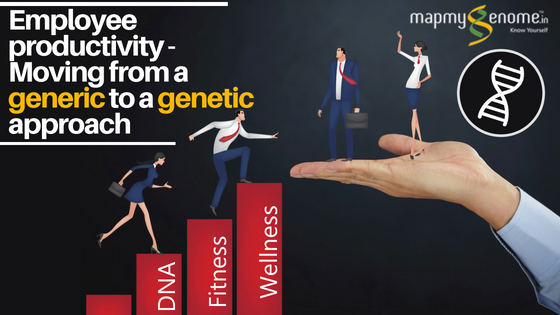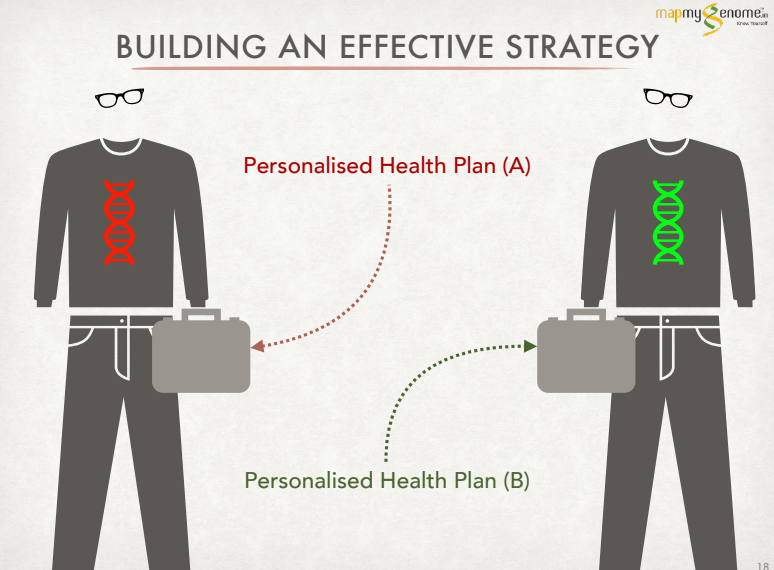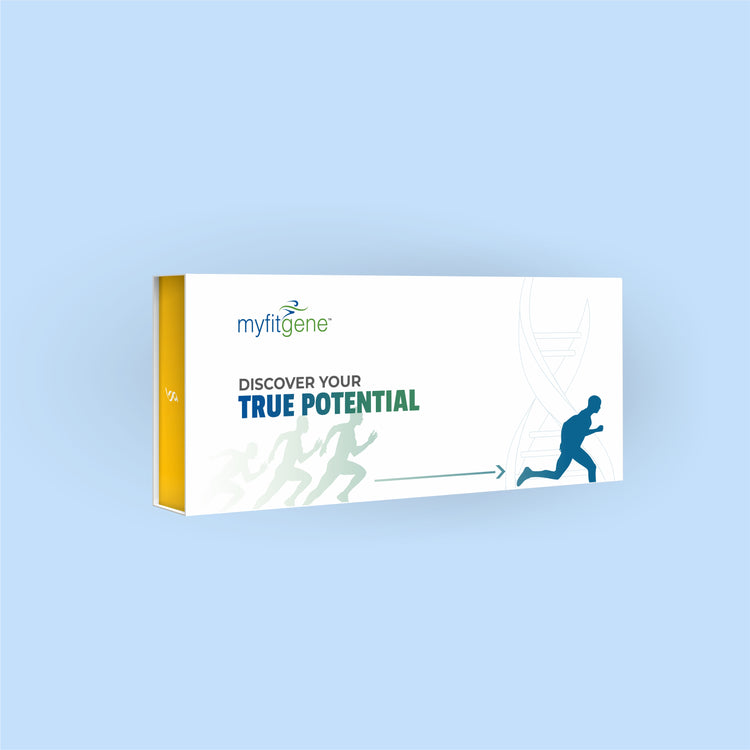Employee productivity: Moving from a generic to a genetic approach
Jul 25, 2018
11386 Views
“Healthy employees make better, more productive employees.”
Starting with what seems to be rather obvious. Brash rather. Almost a bit too “in-your-face”. However, it needs to be said, time and again. And then some more. For though it seems to be something that falls in the “Duh! That’s obvious” domain, it is oft forgotten or ignored in this target, money, fame guts and glory driven business world. It’s not just the employers who are at fault here; employees too put their own health somewhere on the back-burner, in their pursuit of “success”. And while this is something that should top the list of concerns for one and all, truth is, we have all become comfortably numb.
Whether it’s the C-suite we are talking about or the regular Joe employee, productivity is an essential metric for performance and success. And health, wellness and mindfulness play a vital role in ensuring just that.
An optimum health regime is one that provides consistent results and reasonably suits an individual’s schedule, lifestyle/interests, and….GENES! Yes, genetics plays a HUGE role in determining susceptibility to lifestyle disorders, behavioural tendencies (such as stress response) and health risks. Personal genomics is a powerful tool that allows individuals to truly understand themselves – by learning about their weaknesses and how to work on their strengths. Intricacies such as metabolism, heart health, psyche and other biological factors are strongly linked to genetic makeup. A deeper understanding of innate predispositions (DNA/genetic) can help bring out the best in every employee – post the analysis and reports, our counselors help formulate tailored action plans which mitigate risk, possibly delay onset of symptoms and bring in long-lasting health.
What does that have to do with increasing productivity? Simple. Focus on improving employee health, since healthy employees increase productivity. It’s the latest buzz – one I’m sure you’ve heard. But is it true? Or just a much-too-hyped agenda propagated by health and wellness companies eyeing a spot in the corporate wellness program?
As it turns out, there are numerous surveys, studies and studies conducted by several independent groups globally – all trying to answer this burning question. (One quick search for the same on Google gets you multitudes of pages worth of reading material on the same). In a nutshell – YES! This is true!
Here are a few results from such studies:
- Employees who indulge in a healthy diet, are 25% more likely to have what we term as a “Higher Job Performance” – source
- Those employees who partake in exercise for at least 30 minutes, minimum three times a week are 15% more likely to have higher job performance – same source as above
- This one is a no-brainer really, but healthy employees take less sick leaves. Almost 27% lower absenteeism is seen in employees eating healthy, and indulging in regular exercise.
- Globally – Overweight employees end up being quite heavy (sic) on their employers’ pockets – costing them $73.1 billion a year, and filing twice as many worker compensation claims. – source
- Employee engagement improves by 14% when they’re provided with off time, 10% when given healthy eating options, 18% when given time to partake in healthy activities, 18% when granted some flexibility in their schedule – Quantum Workplace Report
- Healthy employees reduce healthcare costs – In fact, according to the Willis Survey, a staggering 61% of employers agree that the habits of the employees are the major challenge in curbing healthcare costs; 93% of the employers believe that healthy employees are more productive, but fail to measure metrics of productivity – absenteeism, presenteeism, FMLA etc.

Workplace Wellness – The key to a thriving business
What can the leaders do?
Innovative, forward thinking companies have built into their DNA the ability to create a culture of “You matter to us”. Those heading the leaderboards of effective leaders understand that it is imperative to look beyond just wellness, and engage employees in something that transcends that – their well-being.
Creating such a workplace culture, one that enforces well-being, relies on the ability of the leaders to activate the entire employee base, focus their attention and efforts on key lifestyle and behavioral traits, and effectively target the chronic conditions that need to be managed – This enables the implementation of a solution that fast-tracks each employee’s race to his well-being.
Healthcare costs are on the rise. Is that crushing businesses?
Well…yes. Increasing healthcare costs continue to be one of the biggest concerns to businesses globally. From 2000 to 2015, employer-sponsored health insurances (family coverage) have increased by 114%, with the total healthcare costs in countries such as USA expected to cross 20% of GDP by 2019! That’s massive!
And that’s not all – moving beyond insurance premiums, employers globally spend anywhere between 500 – 10,000 USD per employee per year! And this figure keeps the overweight outliers we mentioned earlier out of the calculations.
Take an average employee. He/She has at least 2 health risks. 2 points of concern to the employer – from elevated healthcare costs, to increased absenteeism and lowered productivity. Putting numbers to this – it can add up to almost $9000 in costs incurred to the employer annually! This highlights the importance of the implementation of a well-designed wellness program, that carries the potential to cut these risks in half, if not eliminate them altogether!
And it’s not just the employer that faces the challenge of facing monumental healthcare costs if their workforce isn’t focussed on their well-being. An average employee’s contribution towards their premiums has gone up by a staggering 47% since 2005. As of 3 years ago, the average employee was responsible for about 19% of his individual insurance premium, and ~30% of his family’s. Add to this the fact that employees pay high co-pays at clinics, with ever increasingly higher deductibles for hospital services, and it’s evident that both employees and companies seem more motivated than ever before to keep healthcare costs low.

How do wellness programs help?
Latest studies such as this one make that connection for us. Rather succinctly. Without going into excruciating detail here, and effective wellness program boosts productivity (the average economic impact of an individual’s health risks on productivity is to the tune of $2000 per employee per year!), decreases employee turnover by about 20-30%, enhances employee morale and decreases the compensation claims.
Poor behaviours and elevated health risks are predictors of Presenteeism. ( source)
Presenteeism is a much bigger evil than absenteeism, since it can’t be metricised, and hence you can’t even give a ballpark for the impact it has on an organisation’s growth, revenue and loss of function. However, presenteeism is akin to a communicable disease, and spreads uncontrollably. Statisticians still haven’t been able to arrive at a number, but estimate that the inherent tendency of humans to socialise with colleagues coupled with their state of “presenteeist” mindset initiates a snowball effect on reducing overall productivity of the company.
In the presence of a well established, effective wellness program, employees in general scored higher on the happiness index, and are shown to be less likely to develop serious disease, while witnessing a potential increase of about 4.5 years in longevity.
So you get a workforce that’s happier, less prone to falling sick, more likely to stay and work for a longer time! Sounds like a Michelin star recipe for success!
How does personal genomics help?
Personal genomics is the field of study of the human genome with a focus on identifying molecular variations in the DNA of each individual, and assessing the possible impact of the same on the health of that individual.
Through a simple, painless saliva swab, a personal genomics test such as Mapmygenome’s Genomepatri can assess one’s genetic risk for over 100 health conditions – ranging from risk for substance abuse and addiction to the body’s ability to breakdown dietary fat, down to over 15 types of cancers, cardiac conditions, neurological conditions, response to stressful situations, ability to learn from errors, and much much more.
The quest to create an “effective” wellness program relies on appreciating a universal truth – Individuals are unique. Each person is unique in their abilities, behaviours, body composition, nutritional needs, ability to exercise, predispositions to health risks, response to medications, response to stressors, and basically every other realm of life imaginable. These differences amongst us boil down to our DNA, our blueprint of being, the instruction manual that comes with us all. The effectiveness of a Wellness program is limited to its impact on each employee. Which is why, a blanket strategy – carpet bombing the organisation with a one size fits all plan falls short in delivering the true value.
The realisation of each employee’s uniqueness through a personal genomics test such as Genomepatri helps establish a wellness plan that caters to each employee’s personal health risks, optimising screening, prevention and treatments – leading to significantly reduced healthcare costs, reduced absenteeism and presenteeism, increased productivity, and a happier, healthier workforce. Right from the sub-staff to the C-suite elite.


